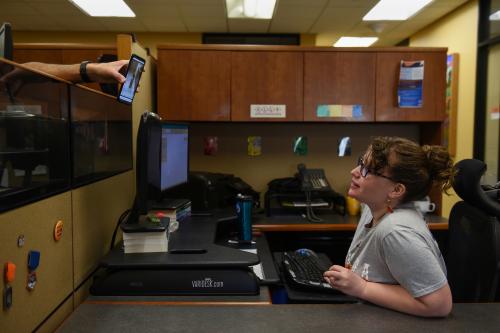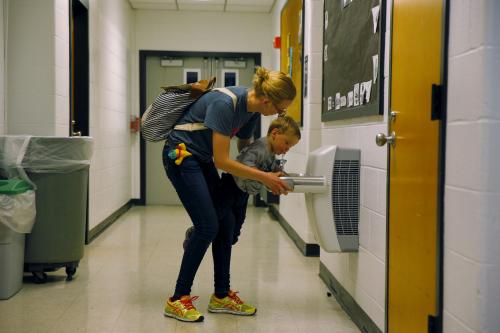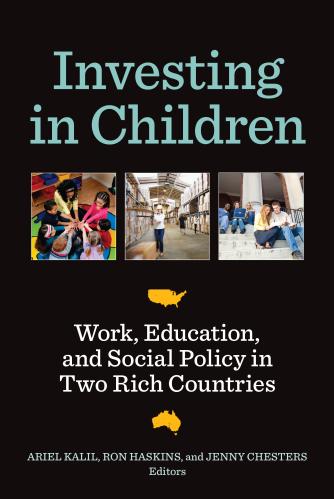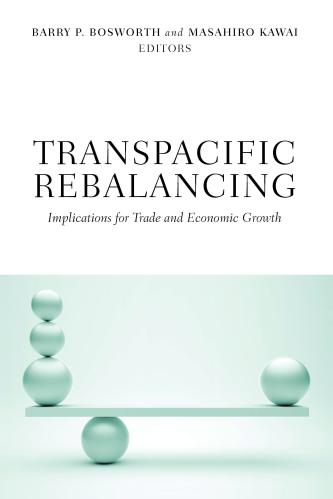This article originally appeared in Quartz on April 24, 2017.
This week, parents are being urged to take their kids to work for the day. But here’s a better idea: Don’t. Strike a blow for equality by taking a kid from a different social background instead.
Take Our Daughters and Sons to Work Day is intended to get children thinking about their future careers, but by having parents take their own kids to work, we perpetuate class divides. If your mother is a lawyer, you spend the day in a law firm. If your dad stocks shelves in a grocery store, then—if he is even allowed to bring you along—that’s what you will see. If your parents are unemployed, you don’t have a chance to go anywhere at all. And so the wheel turns.
When the event was founded back in 1993 as Take Your Daughter to Work Day, the idea was to promote gender equality. It expanded to include sons 10 years later, and has since lost much of its animating purpose. It also remains a largely white-collar exercise: Sponsors of the foundation that advocates for the holiday include MetLife, HP, AOL, and Goldman Sachs.
The Take Our Daughters and Sons to Work Foundation tries hard to suggest an equitable goal, encouraging organizations to include “children from housing authorities and shelters, nieces and nephews, neighbors and friends, granddaughters and grandsons, and more.” Former US president Barack Obama tried valiantly to shift the day’s focus: In 2015, he urged employers to think bigger. “Reach out to young people in your community who don’t have a workplace to visit,” he urged. “Invite them to spend the day with you. Show them what you do every day, and tell them that, with hard work and determination, they can do it too.”
But in practice, Take Our Daughters and Sons to Work Day hasn’t changed much. We need to turn it on its head. At Brookings we are trying to practice what we preach, and so this Friday we will be hosting over 100 high schoolers from DC Public Schools, as a result of a new partnership with two non-profit organizations—Build DC and the Latin American Youth Center—and DC Public Schools.
One of the biggest challenges the US is a lack of intergenerational social mobility. Too many children end up in similar positions to their parents on the social and economic ladder. Given this, the case for exposing disadvantaged kids to white-collar jobs is pretty clear. But there is something to be said for the other side of coin, too. Teenagers from affluent backgrounds often live in a bubble, surrounded by friends, neighbors and fellow students who share similar backgrounds. “Our kids are increasingly growing up with kids like them who have parents like us,” writes the Harvard social scientist Robert Putnam in his book Our Kids. He warns this represents “an incipient class apartheid.” It couldn’t hurt for upper-middle-class kids to step outside their bubble and spend a day in a working-class job.
In April 2016, the US senate approved Resolution 424, commending Take Our Daughters and Sons to Work Day for “promoting and ensuring a brighter, stronger future for the United States.” Right now, it does no such thing. But if more organizations open their doors to less advantaged young people—to sons and daughters who are “ours” in the broader sense—then we will actually have something to celebrate.
The Brookings Institution is committed to quality, independence, and impact.
We are supported by a diverse array of funders. In line with our values and policies, each Brookings publication represents the sole views of its author(s).










Commentary
Op-edThere’s a better way to celebrate take your kids to work day: Taking someone else’s kid instead
April 24, 2017